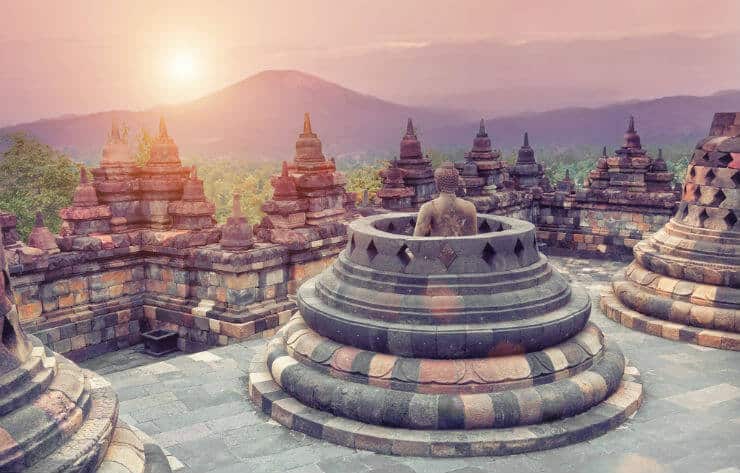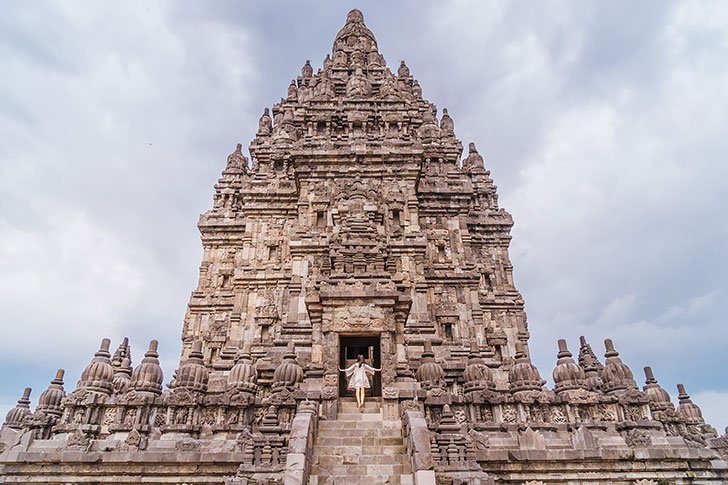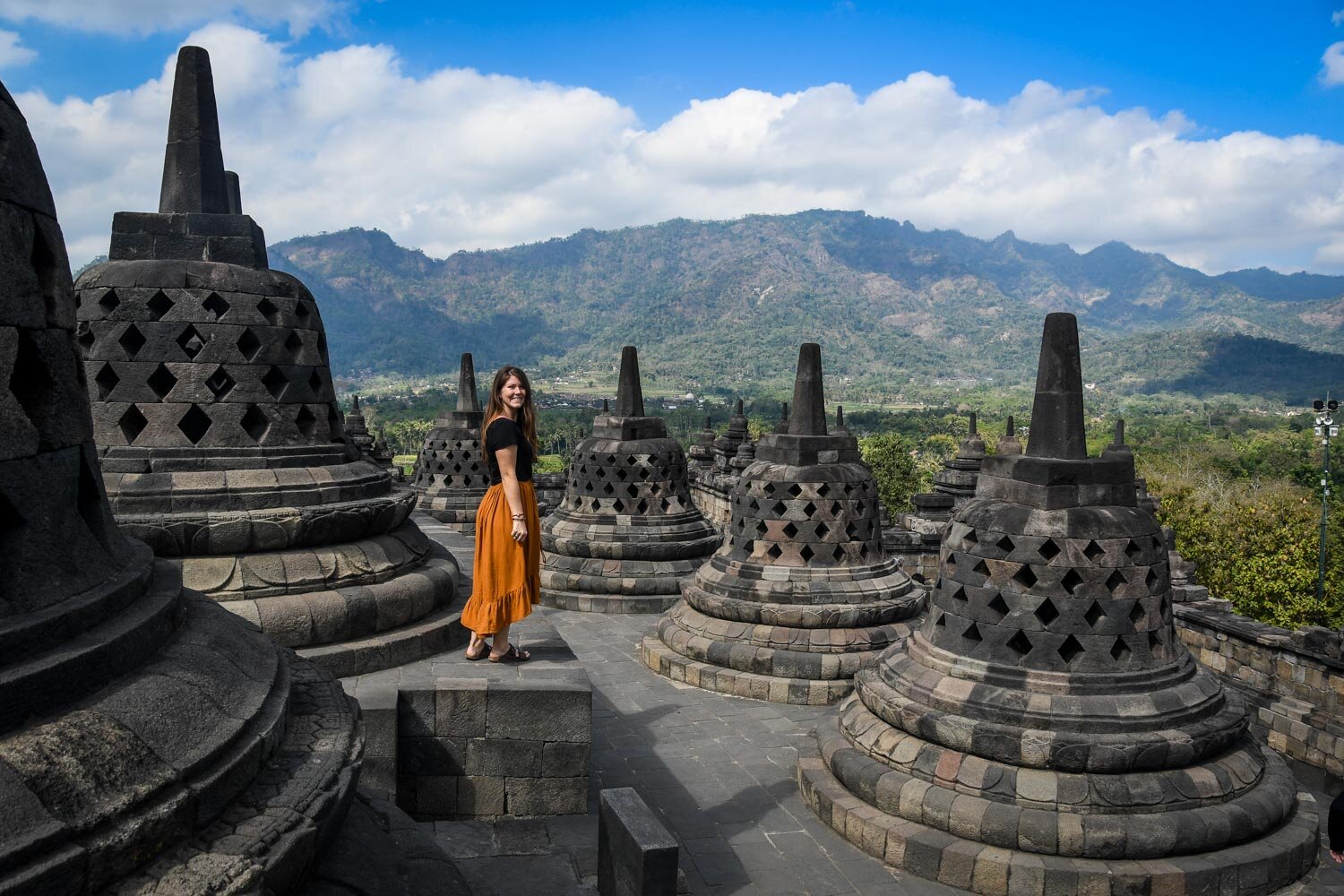
Yogyakarta, affectionately known as "Jogja," is more than just a city; it’s a vibrant tapestry woven from rich history, profound spirituality, and a captivating artistic spirit. Nestled on the island of Java, Indonesia, this cultural heartland beckons travelers with its ancient temples, bustling markets, and a palpable sense of tradition that permeates every corner. From the majestic Borobudur to the intricate batik workshops, Yogyakarta offers an immersive experience that leaves an indelible mark on the soul.
A Journey Through Time: The Rich History of Yogyakarta
The story of Yogyakarta is deeply intertwined with the Sultanate of Mataram, a powerful Javanese kingdom that once dominated the island. In the 18th century, the kingdom was divided, and the Sultanate of Ngayogyakarta Hadiningrat was established in 1755, with the magnificent Kraton (Sultan’s Palace) becoming its epicenter. This marked the beginning of Yogyakarta as a distinct cultural and political entity, a legacy that continues to thrive today.

Related Articles about Yogyakarta: The Soul of Java and Its Enduring Allure:
- Emerald Isle Enchantment: A Comprehensive Guide to Ireland’s Top Attractions and Travel Essentials
- Jakarta: A Traveler’s Guide to the Bustling Capital of Indonesia
- Chiang Mai: The Rose of the North – An Ultimate Travel Guide
- Beyond the Inca Trail: Unveiling Peru’s Finest Hotels and Unforgettable Experiences
- Japan: A Tapestry of Tradition and Tomorrow – Exploring the Archipelago’s Top Attractions
Throughout its history, Yogyakarta has been a bastion of Javanese culture and art. It played a pivotal role in the Indonesian independence movement, serving as the temporary capital of the Republic of Indonesia in the late 1940s. This spirit of resilience and independence is still evident in the city’s character and its unwavering dedication to preserving its heritage. The presence of the Sultan, who is also the governor of the Special Region of Yogyakarta, further underscores the city’s unique status and its commitment to maintaining its cultural identity.
Unveiling the Treasures: Top Attractions in Yogyakarta
Yogyakarta’s allure lies in its diverse range of attractions, catering to every kind of traveler. Here are some of the absolute must-sees:
1. Borobudur Temple: An undisputed UNESCO World Heritage Site and one of the world’s largest Buddhist temples, Borobudur is an awe-inspiring testament to ancient Javanese artistry and devotion. This 9th-century marvel, built in the shape of a mandala, features nine stacked platforms adorned with over 2,600 relief panels and 500 Buddha statues. The sunrise view from the top of Borobudur is an experience of profound beauty and tranquility, as the first rays of light illuminate the surrounding mist-shrouded landscape. Exploring its intricate carvings and ascending its terraces offers a spiritual journey and a glimpse into the grandeur of the Sailendra Dynasty.
2. Prambanan Temple: A magnificent Hindu temple complex, also a UNESCO World Heritage Site, Prambanan stands as a striking contrast to Borobudur’s Buddhist serenity. Dedicated to the Trimurti – Brahma, Vishnu, and Shiva – this 9th-century complex is a symphony of soaring spires and intricate stone carvings depicting scenes from the Ramayana epic. The sheer scale and architectural brilliance of Prambanan are breathtaking, and witnessing a traditional Ramayana ballet performance with the illuminated temples as a backdrop is an unforgettable cultural spectacle.
3. Kraton Ngayogyakarta Hadiningrat (Sultan’s Palace): The heart and soul of Yogyakarta, the Kraton is a living testament to the city’s royal heritage. This sprawling complex, still inhabited by the Sultan and his family, offers a fascinating insight into Javanese court life, traditions, and art. Visitors can explore ornate pavilions, serene courtyards, and museums showcasing royal artifacts, traditional Javanese gamelan instruments, and exquisite batik. The Kraton is not just a historical site; it’s a vibrant cultural center where traditional performances and ceremonies are still held.
4. Taman Sari (Water Castle): Adjacent to the Kraton, Taman Sari is a former royal garden and bathing complex, a serene oasis designed for the Sultan and his consorts. This picturesque site features a network of underground tunnels, hidden chambers, and a beautifully restored bathing pool. Exploring Taman Sari offers a glimpse into the more private and recreational aspects of royal life, with its intricate architecture and tranquil atmosphere.
5. Malioboro Street: The pulsating artery of Yogyakarta, Malioboro Street is a sensory overload in the best possible way. This bustling thoroughfare is a vibrant mix of street vendors, shops selling local handicrafts, batik, leather goods, and delicious street food. As dusk descends, Malioboro truly comes alive with the aroma of sizzling satay, the melodies of street musicians, and the vibrant glow of countless food stalls. It’s the perfect place to soak in the local atmosphere, haggle for souvenirs, and indulge in authentic Javanese flavors.
6. Merapi Volcano: For the adventurous souls, a trek to the slopes of Mount Merapi, one of Indonesia’s most active volcanoes, offers an exhilarating experience. While climbing to the summit might be restricted due to its volcanic activity, jeep tours provide a thrilling way to explore the rugged landscape, witness the aftermath of past eruptions, and enjoy panoramic views of the surrounding countryside. Visiting a Merapi lava tour village offers a poignant reminder of the volcano’s raw power.

7. Ullen Sentalu Museum: Located in the cool highlands of Kaliurang, the Ullen Sentalu Museum is a hidden gem dedicated to preserving Javanese culture and its aristocratic heritage. This beautifully curated museum showcases royal heirlooms, traditional Javanese clothing (kebaya), and historical documents, offering a deeper understanding of Javanese royalty and their influence on art and society. The serene atmosphere and informative exhibits make it a worthwhile detour.
8. Batik Workshops and Villages: Yogyakarta is synonymous with batik, the intricate art of wax-resist dyeing. Visiting a batik workshop or a traditional batik village, such as Kampung Batik Giriloyo, is an essential part of the Jogja experience. Here, you can witness skilled artisans at work, learn about the different batik techniques, and even try your hand at creating your own unique piece of art. Many workshops offer guided tours and the opportunity to purchase authentic batik directly from the makers.
Essential Travel Tips for Your Yogyakarta Adventure
To make the most of your trip to Yogyakarta, consider these practical tips:
- Respect Local Customs: Yogyakarta is a conservative city. Dress modestly, especially when visiting religious sites. Always remove your shoes before entering temples and mosques.
- Bargaining: Haggling is a common practice in markets like Malioboro. Be polite, smile, and have a fair price in mind.
- Stay Hydrated: The tropical climate can be hot and humid. Drink plenty of bottled water.
- Learn Basic Indonesian Phrases: While English is spoken in tourist areas, knowing a few basic phrases like "terima kasih" (thank you) and "selamat pagi" (good morning) will be appreciated.
- Embrace the Food Scene: Yogyakarta is a culinary paradise. Be adventurous and try local specialties like Gudeg (jackfruit stew), Sate Klathak (skewer-grilled meat), and Bakpia (sweet pastry).
- Sun Protection: The sun can be intense. Wear sunscreen, a hat, and sunglasses.
- Transportation Etiquette: Be mindful of motorcyclists and traffic when crossing streets.
Your Home Away From Home: Accommodation Options in Yogyakarta
Yogyakarta offers a wide range of accommodation to suit every budget and preference, from luxurious hotels to charming guesthouses.
- Luxury Hotels: For a pampered experience, consider international chains or upscale boutique hotels offering excellent amenities, fine dining, and prime locations.
- Mid-Range Hotels: These hotels provide comfortable rooms, good service, and a balance of affordability and quality. Many are located within easy reach of key attractions.
- Budget Guesthouses and Homestays: For a more authentic and budget-friendly experience, guesthouses and homestays offer a chance to connect with locals and enjoy a more intimate atmosphere.
- Hostels: Backpackers and solo travelers will find a vibrant social scene and affordable dorm beds in numerous hostels across the city.
Navigating the City: Transportation in Yogyakarta
Getting around Yogyakarta is relatively easy and offers a variety of options:
- Taxis and Ride-Hailing Apps: Taxis are readily available, and ride-hailing apps like Gojek and Grab are extremely popular and convenient for both car and motorcycle rides.
- Andong (Horse-drawn Carriages): A charming and traditional way to explore the areas around the Kraton and Malioboro, offering a nostalgic experience. Negotiate the price before your ride.
- Becak (Cyclo-rickshaws): Similar to rickshaws, becaks are a fun and eco-friendly way to cover short distances, especially in the old town.
- Buses: Trans Jogja buses offer an affordable way to get around the city, with designated routes covering major attractions.
- Scooter/Motorcycle Rental: For independent travelers, renting a scooter or motorcycle provides flexibility and freedom to explore at your own pace. Ensure you have the necessary international driving permit.
- Walking: Many of Yogyakarta’s attractions, particularly in the city center, are within walking distance of each other.
The Sweet Spot: Best Time to Visit Yogyakarta
Yogyakarta experiences a tropical climate with two distinct seasons:
- Dry Season (May to September): This is generally considered the best time to visit. The weather is warm and sunny with lower humidity, making it ideal for outdoor exploration and temple visits. Expect fewer rainy days, though occasional brief showers are possible.
- Wet Season (October to April): During this period, the city receives more rainfall, often in the form of heavy afternoon downpours. While the landscape is lush and green, outdoor activities might be disrupted. However, accommodation prices can be lower, and there are fewer crowds.
Shoulder Seasons (April-May and September-October): These periods offer a good balance, with pleasant weather and fewer crowds than the peak dry season.
Key Considerations:
- Festivals: If you’re interested in experiencing local festivals, research the dates of events like Sekaten (commemorating the Prophet Muhammad’s birthday) or the Yogyakarta Art Festival, which usually occur at different times of the year.
Yogyakarta is a city that captivates the senses and nourishes the soul. Its rich history, magnificent temples, vibrant culture, and warm hospitality create an unforgettable travel experience. Whether you’re a history buff, an art enthusiast, a spiritual seeker, or an adventurous traveler, Jogja promises a journey filled with wonder, discovery, and a deep appreciation for the enduring spirit of Java.





